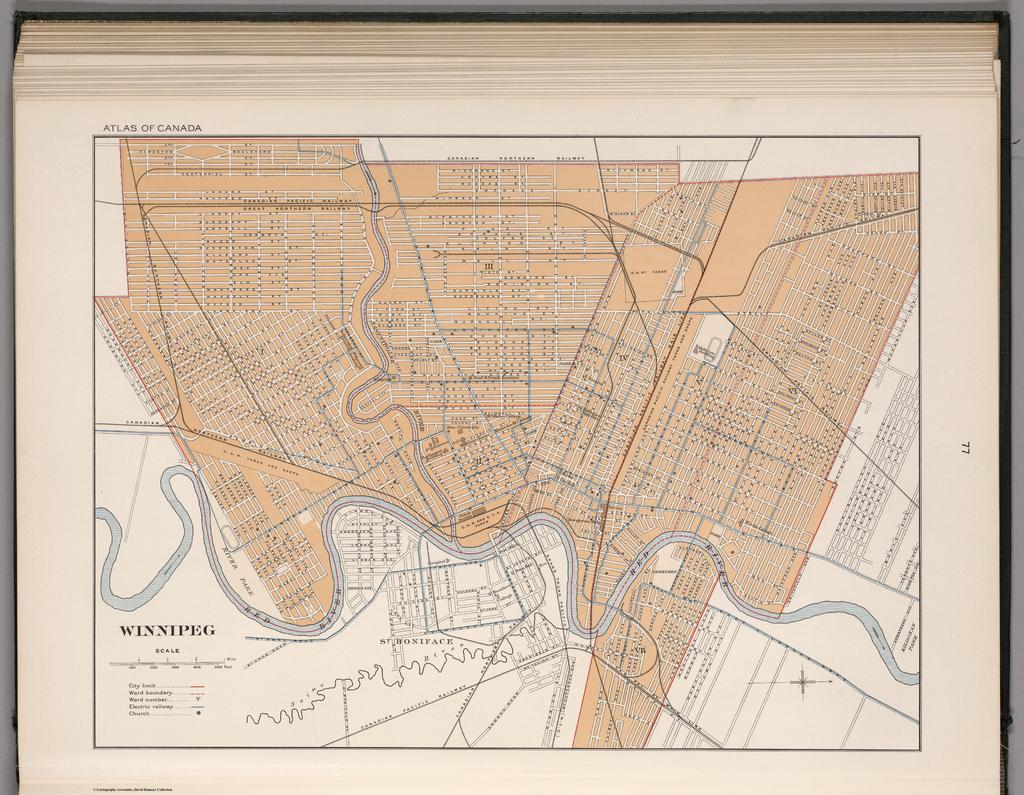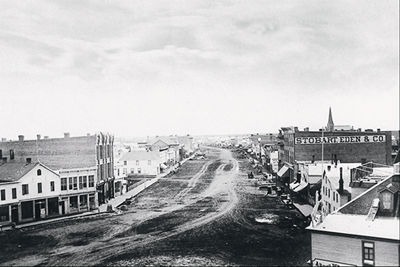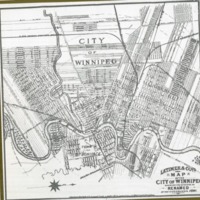Winnipeg: From 1874 to 1913
Winnipeg at the end of the 19th to early 20th century was a city built on ambition. Winnipeg’s prime location at the center of the continent and several nearby rivers led it to be coveted as a transportation hub. If Vancouver was to be Canada’s Western port and Halifax Canada’s East Winnipeg was to be the central thoroughfare for the continent itself. The commercial elite which controlled Winnipeg and gave life to this raw ambition at the end of the 19th century placed material growth above the need for social welfare.[1] Thus in judging this material progress of Winnipeg the city, one gains insight into Winnipeg the society. From Winnipeg’s incorporation as a city in 1874 to its slow peak and decline following the opening of the Panama Canal and the Great War Winnipeg exploded in growth. The ‘Chicago of the North’s’ relentless pursuit of material expansion and quantitative growth in citizens left sections of it qualitatively destitute. Winnipeg at the end of the Victorian era was rocked by income inequality and riddled with class tensions which would erupt dramatically in 1919.[2] Much of Winnipeg’s growth was premised on its status as a transportation nexus for the continent; thus, this project seeks to examine one aspect of this focus on transport: roads. The pursuit of greatness and the material development of Winnipeg to metropolis left behind a legacy of inequality which is materially evident from its roads. Where streetcars were laid, why certain sections were lavished with funds, and how certain kinds of roads became imbued with this coveted modernity all help tell the story of early modern Winnipeg.
“What a sorry sight was presented by that long-thought-of-town of Winnipeg on the day we entered it! What a mass of soft, black, slippery and sticky Red River mud was everywhere spread out before us! Streets with neither sidewalks nor crossings, with now and again a good sized pit of mire for the traveller to avoid or flounder through as best he could; a few small stores with poor goods and high prices; one little tavern where 'Dutch George' was "monarch of all his survey"; a few passable dwellings with no "rooms to let/' nor space for boarders; neither church nor school in sight or in prospect; population about one hundred instead of one thousand as we expected-such was Winnipeg on July 4th, 1868.” [1]
- George Young, 1868.
From the above quote the Winnipeg of the 1860s and 70s when compared with the metropolis of 1913 demonstrates massive differences in material conditions. The Winnipeg Young visited was one barely a step above a desolate village. Road and sidewalks were overwhelmingly dirt, though one less generous would say mud, acted as the main means of getting about town. By 1871 Justus A. Griffin remarked that:
"the streets were good in winter and dry weather, but in wet weather they become exceedingly bad, and pedestrians had to wade through mud. In the springtime, the small stretches of sidewalk on the east side of Main Street floated like barges."[2]
One can imagine that the material reality of such conditions, of having to wade through mud, would bear heavy on the conscience of any Winnipeggers who sought to aggressively develop the town into a metropolis. One can see the political realities of the desire to develop the town, and the importance of roadways within this, in that the first bylaw passed by the city council in 1874 regarding funding had three points out of seven explicitly calling to the construction or improving of streets. Furthermore, when considering the money allocated to this measure, these three points encompassed sixty thousand of the two hundred and fifty thousand dollars allocated.[3] Thus, from the origins of Winnipeg as a metropolis city improvement generally, and road construction specifically, formed the crux of its political funding.[4] As a wrinkle in this settlement and urbanization scheme was the importance yet crooked nature of Main Street which city council grappled with throughout Winnipeg’s early growth.[5] Thus, while many of early Winnipeg sought to build a modern city, a holdover from its early days continued to pose a consistent irritation. Interestingly, well before the distinct separation between the North and South Sides of Winnipeg, already deficiencies in construction are apparent. In 1874 while a total of $ 8, 246.03 would be expended on sidewalks, only 13% of this would go towards the North Ward (1,072. 26). While settlement patterns presumably led to more built up areas receiving more funds, it is ironic that the ambitions of Winnipeg In 1874 already reflected the later commercial elite’s gross marginalization of the North Side. Interestingly, this lack of funding could also be read as the first of many occurrences of the political elite of the town failing to consider long term impacts of hollowing out funding to specific wards.[6]
[1] George Young, Manitoba Memories (Toronto, 1897), 63-64.
[2] Healey, W. J., Winnipeg’s Early Days, (Winnipeg: Stovel,1927), 25.
[3] The largest item being one hundred thousand for sewers.
[4] Begg, Alexander, and Walter R. Nursey, Ten Years in Winnipeg (Winnipeg: Times Printing and Publishing House, 1879), 101.
[5] Artibise, Alan F. J, Winnipeg: A Social History of Urban Growth, 1874-1914, (Montreal: McGill-Queen’s Press, 1975), 148.
[6] Ibid., 110,111.
Commercial and political elites of Winnipeg sought to define the city in terms of boundless growth and continental importance. One of residents favorite names of the city of the, “Chicago of the North,” reflect both Winnipeg’s status as a transportation hub along with resident’s desire for grandeur. The marketing of the city as Canada’s Western commercial capital emphasized this desire for metropolitan status.[1] This coveting of modernity is seen in how early political leader’s sought to rebrand Winnipeg’s streets. From 1891 to 1893 Winnipeg’s streets were renamed to follow a grid based, numerical system identical to New York.[2] Such a move can be seen both as a move towards modernity along the axis of quantification, along with the civic leaders of the time adopting a, “follow the leader,” approach. Imitating the street naming style of New York would presumably, in the eyes of city council, reflect Winnipeg’s path towards resembling New York or Chicago in other aspects as well. This decision most likely made from an ideal faced the reality of basic commuting, as two years after its introduction the old street names were reverted due to widespread confusion.



